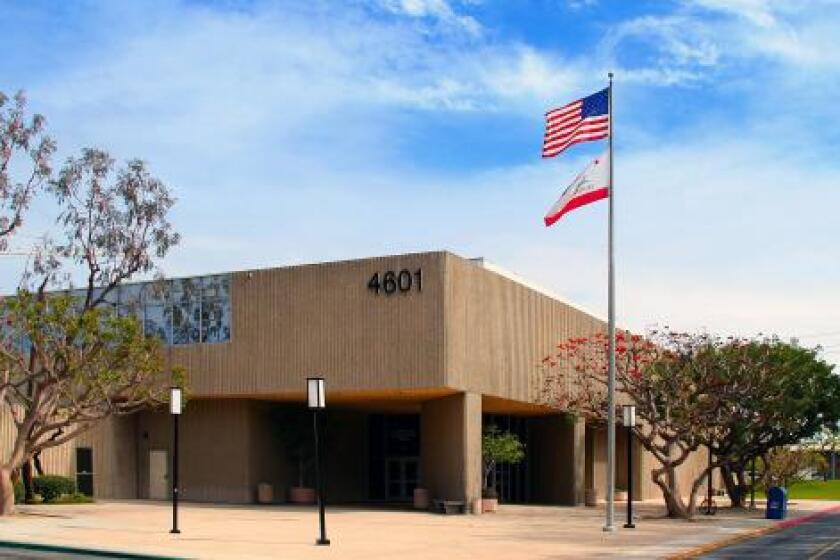Nothing quite like it
- Share via
ROBERT GARDNER
* EDITOR’S NOTE: The Daily Pilot has agreed to republish The Verdict,
the ever-popular column written for many years by retired Corona Del
Mar jurist and historian Robert Gardner, in exchange for donations to
the Surfrider Foundation. This particular column was originally
published in April 1993.
Balboa is in danger of losing its identity. It is now generally
referred to as the Peninsula, while Balboa Island has acquired the
name of Balboa. Also losing its identity is East Newport, a village
within the village of Balboa.
Once upon a time, the Pacific Electric left its Balboa station at
Main and Central, trundled a few blocks, stopped where the Balboa
Library is now located and there, to the accompaniment of much bell
clanging, the conductor announced: “East Newport.”
Today if you ask the average resident of the city of Newport Beach
where East Newport is, all you will get is a blank stare. You might
as well be asking about Atlantis.
For the uninitiated, East Newport is that part of the Balboa
Peninsula that extends between the ocean and the bay and from Buena
Vista Boulevard to Fernando Street. It includes Coronado and Alvarado
streets and Montero, Anade, Island and Lindo avenues. Of course,
Alvarado Street is more of an alley than a street and Buena Vista
Boulevard is only a sidewalk without a street, much less a boulevard.
However, if one wants to see what this town looked like 70 or 80
years ago, I suggest a pleasant stroll through East Newport. It is
delightful. The area was laid out in 1904, and by the time I arrived
in town in 1921, it was built up with a distinctive type of house now
known as traditional beach cottages -- single-story frame dwellings,
often of single-wall construction and each with an enclosed front
porch. Each was small, built to accommodate a 30-foot lot, and each,
of course, had but one bathroom. I was an adult before I lived in a
house with two bathrooms.
Each cottage is distinctive, each has its own personality. If
there was a builder who built more than one house, it doesn’t show. A
modern subdivision it isn’t. In a modern subdivision no matter how
many times the builder turns over the basic house plan all the houses
in the subdivision are distressingly similar. More importantly, East
Newport has something not found in modern subdivisions -- alleys.
Thus, houses, not garages, face the street. As a result, when you
walk through East Newport you see people, not garage doors. In East
Newport one has a feeling of provincial closeness, a feeling of the
town as it existed many years ago.
For a stroll through East Newport I suggest parking near the
Newport Harbor Yacht Club and starting your walk down Buena Vista
Boulevard toward Bay Island, the town’s first exclusive enclave. Of
course there isn’t any boulevard, the houses face right on the bay.
Then the next street is Island Avenue, which leads to the White
Bridge (no longer white), which in turn leads to Bay Island.
Then back and forth (it’s only one block) between Bay Avenue and
Bay Front (which somebody has renamed). From Island you go to Anade
Avenue, then Montero Avenue, then Alvarado Street (the alley) to
Coronado Street and Fernando Street. Each street has some of those
distinctive beach cottages.
Unhappily, Fernando is spoiled by a large, two-story structure
called the Newport Bay Towers. The builder of that structure must
have had a real drag at City Hall because the front of the second
story extends clear over the public sidewalk on the bay front. You
don’t get variances like that any more.
But, back to the stroll. On each of the above streets, avenues and
the boulevard, you will see some of the original beach cottages, each
painted and repainted dozens of times. Unhappily, I must in all
honesty say, there are also some modern structures each, as dull and
uninteresting as a tract home. However, there are enough of the old
houses to make the walk worthwhile.
A walk through East Newport is a pleasant stroll through the past.
Not only do the old houses have personalities, but quite often you
meet people, real people, sitting in their front yards. And, some of
them actually speak to you, friendly like.
Walk in any modern subdivision and, as I say, all you see is
garage doors. Dullsville.
And, unhappily for the walker, driving in and out of those garages
are people who, upon seeing you, reach for their car phones to punch
out 911 to report a suspected gang member or, even worse, a suspected
homeless person walking in their exclusive subdivision.
* Robert Gardner is a resident of Corona del Mar and a longtime
observer of life in Newport Beach.
All the latest on Orange County from Orange County.
Get our free TimesOC newsletter.
You may occasionally receive promotional content from the Daily Pilot.



